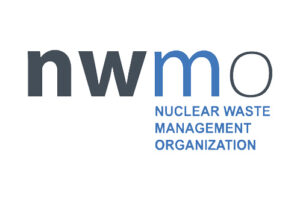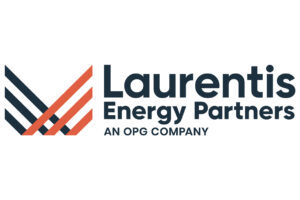


Episode 06
Nuclear Waste Mythbusting
When people think about nuclear, they often think about nuclear waste, or by-products. But when it comes to nuclear by-products, myths are more common than facts.

On a mission to set the record straight, host Osama Baig is joined by two nuclear by-product experts: Nuala Zietsma from Ontario Power Generation and Erik Kremer from the Nuclear Waste Management Organization.
Learn about the different types of radiation [3:10], the categories of nuclear by-products [6:20], what fuel bundles look like and how long they last [8:20], the amount of nuclear waste in Canada [10:20], how nuclear by-products and used nuclear fuel are stored safely [12:00], how OPG is prioritizing waste minimization [14:30], how nuclear by-products compare to those of other energy sources [16:00], Canada’s long-term storage plan for spent nuclear fuel [20:10] and the international best practice known as Deep Geological Repository [21:43].
Nuclear Waste Mythbusting
First, let’s get one thing straight: all types of energy produce waste, or by-products. When you mine coal, for example, there is slag and tailings left behind at the mine site, as well as solid wastes and heat-trapping greenhouse gases that are produced by burning the coal. Even renewable energy generates by-products. According to researchers, the U.S. alone will have 720,000 tonnes of wind turbine blade waste to dispose of over the next 20 years.
Nuclear power generation also creates by-products, but it would surprise most people to learn that, compared to other forms of energy production, the environmental impact of nuclear by-products is extremely limited. This strikes many as counter-intuitive, because we’ve been taught to think of nuclear by-products as a dangerous, glowing-green ooze. To be clear, nuclear by-products do require careful handling because of their radioactivity. But it is precisely because of this risk that the nuclear industry has developed such robust by-product management practices. As a result, there has never been a single incident with nuclear by-products in Canada’s 6+ decades of operating nuclear reactors.
Read more...
On this episode of OPG’s The Climate Challengers podcast, host Osama Baig and his guests set out to directly confront the many popular myths about nuclear by-products by taking listeners through the types of by-products produced at an OPG nuclear plant and the ways in which they are handled, moved and stored safely.

Osama’s first guest, Nuala Zietsma, is a Director of Strategy and Stakeholder Relations in the Nuclear Sustainability Services division of OPG.
Myth: Radiation is inherently harmful
Radiation, in and of itself, is not a threat. “Radiation can be found all around us… radiation is in our soils, it's in our air, it's in our water. It's in us. It's in a lot of the materials that we build our houses with. And because it's colourless, and it's odorless, it's really difficult to see it. So it creates those myths,” Nuala tells Osama.
Nuala has worked around nuclear reactors and nuclear by-products for twenty years. In that time, she has received a total of six millirem of radiation (a millirem is one thousandth of a rem, a standard unit used to measure radiation). A roundtrip flight between Los Angeles and Paris, by comparison, would provide a traveller with 10 millirem of radiation, while the average yearly dose from our natural environment is about 365 millirem.
Radiation does, however, become dangerous in large, sustained doses, which is why everything that goes in and out of a nuclear facility is carefully monitored and meticulously sorted and either stored or disposed of, depending on its composition.
Myth: There is only one type of nuclear by-product
There are three types of nuclear by-products: low-level, intermediate-level and high-level, classified according to the amount of radioactivity and correspondent containment requirements.
Low-level by-products are lightly contaminated items such as workers garments, gloves, or small tools or equipment that is used in the reactor building where radiation is present. These items have been lightly exposed to radiation and comprise about 98% of the nuclear by-products in Canada. Depending on the item, it can be decontaminated using technological innovations, in the case of metals, or incinerated to reduce the size of the contaminated by-product that needs to be stored, in the case of garments and gloves.
Intermediate level by-products include items such as the resins or filters that are used in the reactors to purify the water systems. Because these items have been in close contact with the reactor, they are stored in steel-lined concrete containers and set in the ground on an interim basis, and will eventually be transferred a long-term facility for permanent disposal.
Finally there are high-level by-products, which consist entirely of the spent nuclear fuel. On the episode, Nuala walked Osama through the process of safely isolating and storing these by-products, busting a few myths along the way.
“Scientists have analyzed the fundamental chemistry and the makeup of all these materials, so we know exactly what type of packaging each material needs. We also know what kind of building it needs to be stored in and we also know the kind of protective shielding that that we need when we're handling it. So for example, the fuel bundles are removed from the reactor and they're placed in large pools, and that's what we call wet storage…. The water in this pool is enough to shield the fuel bundles that are coming right out of the reactor. So you can walk right up to that pool. You can walk around the pool, and you'll be wearing protective clothing that you do on a standard construction site—your hardhat, your goggles, your gloves, your safety boots—but you don't need any extra protection from the radiation because the water is shielding it,” Nuala told Osama.
“Then after several years, the fuel bundles lose a good amount of their radioactivity and heat, so they're moved to dry storage containers. You can walk up and down the aisle or with all the dry storage containers, and it's completely safe and shielded. And you could spend all day and all night there. And I've been there—I've been to our facilities that have these rows of these dry storage containers, and you can walk right up to them.”
Ultimately, Nuala said, the goal at OPG is waste minimization. And compared to other energy sources, nuclear is leading the pack.
Myth: There is an enormous amount of spent nuclear fuel piling up in Canada
Nuala tackled this myth head-on, telling Osama, “If you were to take all the used [nuclear] fuel Canada has produced from the 1960s to today, the total amount of used fuel would fill nine hockey rinks from the bottom of the ice to the top of the boards. And it's because nuclear energy has that really high energy density, so you don't need as much materials for the same amount of energy that you would need from other sources, which means a significant less amount of waste.”
In fact, if an average Ontarians entire lifetime energy needs were met by nuclear, the fuel needed would fit inside a pop can. To get even one year’s worth of energy from a fossil fuel source would require hundreds and hundreds of pounds of coal, oil or gas, which would in turn create waste through both the extraction and burning.
Myth: There is no use for nuclear by-products
While many assume that nuclear by-products are simply waste, in fact, researchers are discovering new uses for nuclear by-products all the time. “There are many items within the industry that we used to think of as waste but because of innovation and new technologies, we've realized that these items are actually really valuable in other industries and other sectors, particularly the medical industry,” Nuala tells Osama. “So take tritium for example. It's produced in CANDU reactors as a by-product of fission. For a very, very long time, we've been managing it as a by-product, but in fact, it actually has many uses: it's used in medicine; it's used in exit lighting; and it's also used in fusion research. And what's interesting about tritium, it naturally decays to Helium-3. So Helium-3 is a rare isotope of hydrogen, and it's in a big demand for border security for medical imaging, and also quantum computing. And OPG subsidiary, Laurentis Energy Partners, is producing Helium-3 at the Darlington station.”
Myth: There is no safe way to store nuclear by-products for the long-term 
It is true that spent nuclear fuel will be radioactive for many generations and needs to be safely secured in long-term storage sites—but guaranteeing the safety of these sites is a global effort that in recent decades has made great strides. To speak about the international best practice for long-term storage of spent nuclear fuel, Osama welcomed Erik Kremer, a Section Manager for Siting Safety Assessment with the Nuclear Waste Management Organization (NWMO).
“Following decades of international research and development and cooperation, there is a clear scientific consensus that deep geological repositories (DGR) offer the best solution for the safe long-term management of used nuclear fuel. We in Canada have chosen a DGR for our used nuclear fuel, as have, I believe, all countries in the world that produce used nuclear fuel as a part of their power utilities,” Erik told Osama.
DGRs are the primary focus of the NWMO, an organization that was created through federal legislation with a mandate to propose and implement a long-term management approach for Canada’s used nuclear fuel. Over the past decade, NWMO has worked with nearly two dozen communities to find a suitable site for the long-term storage of Canada’s nuclear fuel by-products.
A deep geological repository uses multiple barriers that include the waste form (the spent fuel), its container, sealing materials, and the host rock. The system is designed to be failsafe, meaning that the failure of one component would not jeopardize the safety of the containment system as a whole. The host rock is selected based on its stability and predictability over long periods of time, which means geologists can prove that the rock has been stable for hundreds of thousands of years, and has a low permeability, ensuring that the waters in the deep rock are isolated and do not mix with surface waters.
Nuclear by-products are one of the most misunderstood aspects of the nuclear industry, but OPG is committed to doing more to take on popular myths and educate the public. The truth is, nuclear power is the only energy source that takes full responsibility for its by-products and makes financial provisions for the cost of their management and safe long-term disposal. This matters, because nuclear power is zero-emission, affordable and always available—three critical pieces in the fight against climate change.
Facts about nuclear by-products
1 pop can
could fit the waste from an entire lifetime's energy use from nuclear
9 hockey rinks
could fit all the high-level nuclear by-products Canada has ever made
98 per cent
of Canada's radioactive waste is considered low-level
Related topics
Other episodes
The information, statements, comments, views and opinions expressed during this podcast are solely those of the program participants and do not necessarily represent those of Ontario Power Generation Inc. or its affiliates.











